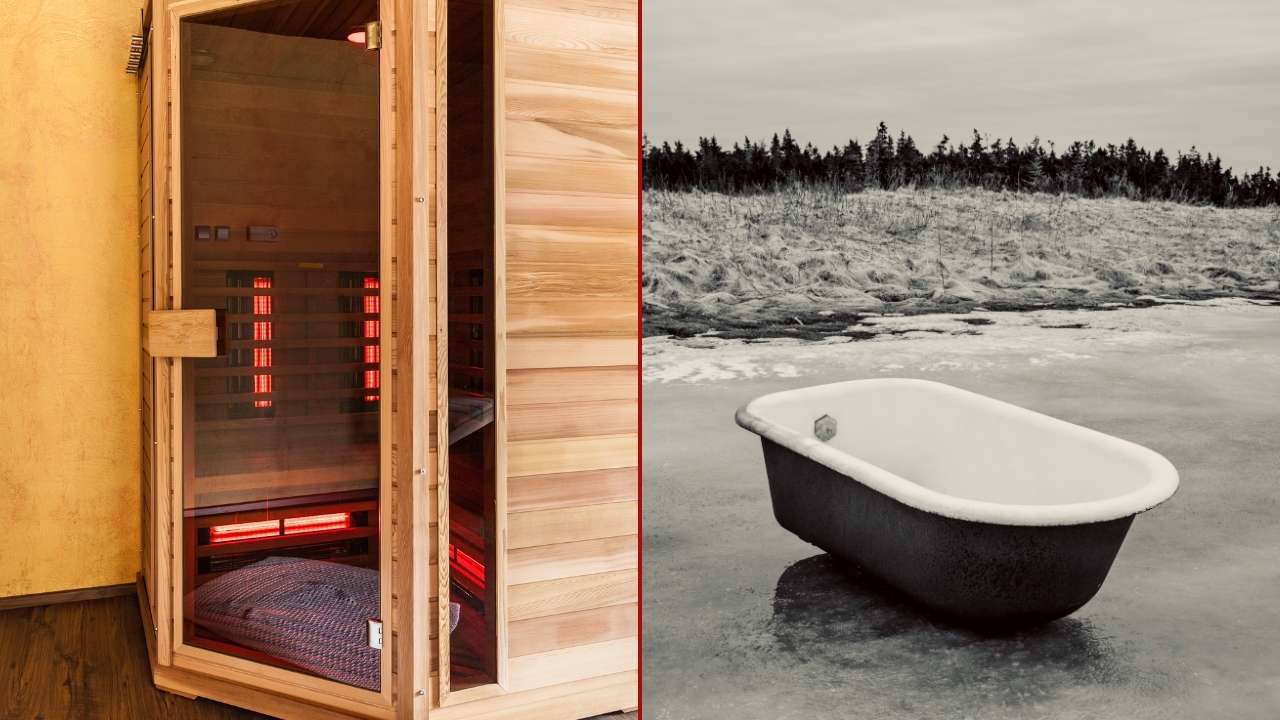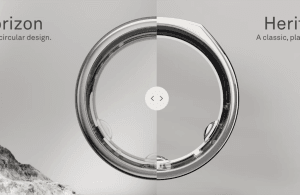Contrast therapy is the process of alternating between hot and cold treatments, such as using a sauna and then jumping into an ice bath.
It’s becoming more popular among athletes, fitness enthusiasts, and even regular people looking for a unique way to recover and relax. The idea behind it is to boost circulation, improve muscle recovery, and give your body a chance to detox.
Saunas help you sweat it out, while ice baths cool you down quickly. If you’ve ever wondered why people would go through this extreme temperature change, this article breaks it all down.
What is Contrast Therapy?
Contrast therapy is a treatment method where you switch between hot and cold environments to improve your physical and mental well-being. In most cases, people use a sauna or steam room for the heat, followed by an ice bath for the cold. This method has been around for centuries, with origins in various cultures that believed in the healing powers of both heat and cold.
The idea is pretty simple: heat makes your blood vessels expand, allowing more blood flow, while cold causes them to constrict, pushing blood back to your core. This cycle of expansion and constriction helps improve circulation, reduce inflammation, and promote faster recovery.
Although many athletes use contrast therapy for muscle recovery, it’s not just for professionals. Regular people who feel stiff, sore, or stressed can benefit from it too. It’s a natural way to boost energy levels, relieve tension, and give your immune system a little nudge.
How Does Contrast Therapy Work?
Contrast therapy works by using the opposing effects of heat and cold to stimulate your body in different ways. When you sit in a sauna, the heat causes your blood vessels to widen, allowing more blood flow to your muscles and skin.
This process, called vasodilation, helps to relax your muscles, reduce tension, and increase circulation. On the other hand, when you plunge into an ice bath, your blood vessels tighten, or constrict, a process known as vasoconstriction. This forces the blood back to your core, reducing inflammation and helping to soothe sore muscles.
By alternating between these two extremes, your body benefits from the contrasting effects of hot and cold. The heat relaxes and opens up your blood flow, while the cold tightens everything back up, which helps reduce swelling and muscle soreness. This rapid shift also stimulates the nervous system, which is why many people feel more alert and energized after a contrast therapy session. It’s like a reset for your body.
The body’s natural response to heat and cold also triggers the release of endorphins, the chemicals in your brain that make you feel good. So not only does contrast therapy help physically, but it can also improve your mood and mental clarity.
One of the most important things to remember is timing. You don’t want to overdo it. Usually, people stay in a sauna for about 10-15 minutes, followed by a quick dip in an ice bath for 1-3 minutes. Repeating this process for two or three cycles is common. Too much exposure to either extreme can put unnecessary stress on your body, so it’s important to listen to how your body feels throughout the process.
The concept is somehow similar to contrast bathing, but in this case, the heating phase does not include warm water but steam or infrared saunas.
Benefits of Contrast Therapy
Contrast therapy offers a wide range of benefits, both physically and mentally. Here’s a breakdown of how it can help:
Improved Muscle Recovery:
- Heat from the sauna boosts blood circulation to your muscles, while the cold from the ice bath reduces inflammation and muscle soreness.
- Athletes and fitness enthusiasts often use contrast therapy to speed up recovery after intense training.
Enhanced Circulation:
- Alternating between heat and cold improves blood flow efficiency.
- Heat causes blood vessels to expand (vasodilation), and cold causes them to constrict (vasoconstriction), helping with oxygen delivery and reducing swelling.
Mental Health Benefits:
- Contrast therapy triggers the release of endorphins, the chemicals that make you feel good.
- It helps reduce stress, improve focus, and even promotes better sleep.
Detoxification:
- Saunas make you sweat, which helps eliminate toxins from your body.
- The cold ice bath helps boost circulation, enhancing the detox process by flushing out waste products more effectively.
Improved Flexibility:
- Heat makes your muscles more flexible, increasing your range of motion.
- This can be especially helpful for preventing injuries and staying limber during workouts.
Boosted Immune System:
- Exposure to both heat and cold challenges your body to adapt, which can help strengthen your immune system over time.
- Regular contrast therapy may make it easier for your body to fight off illnesses.
How to Do Contrast Therapy
To do contrast therapy, you alternate between spending time in a sauna and then quickly jumping into an ice bath. The process is pretty straightforward, but there are some guidelines to follow for the best results.
- Start with the sauna: Begin by spending 10-15 minutes in the sauna. This allows your muscles to relax, and your blood vessels to dilate, increasing blood flow. Make sure you’re well-hydrated before starting, as you’ll sweat a lot during this phase. If you’re not sure how long and how hot your sauna should be, take a look at our free sauna calculator here.
- Move to the ice bath: After your sauna session, immediately transition to an ice bath. The water temperature should be between 10-15°C (50-59°F), and you should stay in for about 1-3 minutes. This quick cooling helps reduce inflammation and tightens your muscles. It’s important to listen to your body—if the cold feels too intense, it’s okay to get out sooner.
- Repeat the cycle: If you’re comfortable, you can repeat this sauna-ice bath cycle two or three times. This back-and-forth between hot and cold maximizes the benefits of contrast therapy by keeping your body in a dynamic state of recovery.
- Finish with the cold: Always end the session with the ice bath, as it helps to bring your body temperature back to normal and reduces swelling.
A few safety tips: If you’re new to contrast therapy, start slow. You don’t need to push your limits in either the heat or the cold right away. Also, make sure to stay hydrated throughout the process, as both the sauna and ice bath can be quite dehydrating.
Lastly, if you have any medical conditions, particularly related to the heart or blood pressure, it’s always a good idea to consult your doctor before trying contrast therapy.
Who Should (and Shouldn’t) Try Contrast Therapy?
Anyone looking to improve their recovery, reduce stress, or simply boost their circulation can benefit from contrast therapy. Athletes, in particular, find it helpful after intense workouts because it speeds up recovery and reduces muscle soreness. Even if you’re not an athlete, if you experience general stiffness or are just looking for a way to relax and refresh, contrast therapy could be a great addition to your routine.
However, contrast therapy isn’t for everyone. People with heart conditions should be cautious, as the sudden temperature changes can put a strain on the cardiovascular system. Those with high blood pressure, circulatory problems, or cold intolerance might also want to avoid contrast therapy unless they have consulted a doctor. Pregnant women should avoid extreme temperature therapies as well, since it could affect both their body and the baby.
It’s also important to listen to your body during the process. If you feel lightheaded, overly uncomfortable, or just not right, it’s okay to stop. Not everyone will react the same way to extreme heat and cold, and that’s perfectly normal.
How Often Should You Do Contrast Therapy?
You should do contrast therapy about two to three times a week for the best results. This frequency allows your body to recover without overloading it with too much heat and cold. For beginners, it’s a good idea to start with just one session a week and gradually increase the number of sessions as your body gets used to the process.
If you’re someone who works out regularly, contrast therapy can be an excellent post-workout recovery method. After a tough gym session or a long run, a sauna followed by an ice bath can help your muscles recover faster.
Doing it right after a workout is usually the most effective time, but it’s not necessary to do it after every workout. Aim for a balance—too much contrast therapy can put extra stress on your body, and it’s important to give your body time to rest and adapt.
For those using contrast therapy primarily for relaxation or mental benefits, twice a week can be a good rhythm. It helps you unwind and relieve stress without pushing your body too hard. Listen to your body—if you feel rejuvenated and not overly fatigued, that’s a good sign you’re doing it the right amount.
Remember, everyone’s body responds differently. If you feel sore or tired after a session, it may be a sign to reduce how often you do it or adjust the time you spend in each phase (heat and cold). The goal is to enhance your wellness, not overdo it.
Conclusion
Contrast therapy, which involves alternating between sauna heat and ice bath cold, offers a range of benefits, from faster muscle recovery to improved circulation and mental relaxation. While science supports many of these benefits, it’s important to remember that individual experiences may vary.
Whether you’re an athlete or just looking for a way to boost your well-being, contrast therapy can be a great tool in your recovery routine. Just be sure to start slow, listen to your body, and consult a healthcare professional if you have any health concerns.




